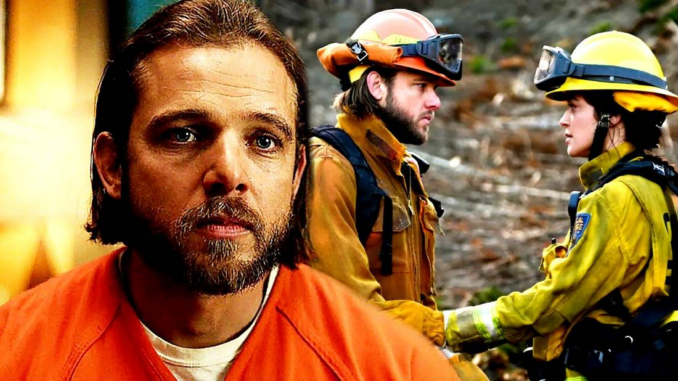
Fire Country: A Surprising Lack of Deaths Amidst Firefighting Danger
In the world of Fire Country, the stakes are high, and the dangers that firefighters face are often life-threatening. Whether they’re battling blazing wildfires or responding to intense emergencies, the team at the firehouse is constantly exposed to peril. However, one surprising aspect of the show is the lack of major deaths, despite the constant tension and life-risking situations. Why does Fire Country seem to avoid the grim reality of firefighter fatalities, even as it portrays such harrowing dangers? Let’s explore this intriguing choice and what it means for the show.
The Harsh Reality of Firefighting
Real-life firefighters are heroes who face extreme risks every day. According to statistics, firefighting is among the most dangerous professions in the world. The dangers include structural collapses, exposure to toxic fumes, and unpredictable wildfires that can change direction at any moment. With the sheer number of dangers involved, firefighter fatalities are not uncommon in real life. So, it begs the question: why doesn’t Fire Country reflect this reality more explicitly?
Why Aren’t More Firefighters Dying on the Show?
One reason for this surprising lack of deaths may be due to the show’s focus on dramatic tension rather than realism. While Fire Country depicts dangerous situations, the narrative often emphasizes the heroism and resilience of its characters, rather than focusing on the tragic reality of fatalities. The lack of firefighter deaths could be a creative decision to maintain hope and optimism in the storylines, allowing viewers to root for their favorite characters without the fear of losing them.
Another factor could be the audience’s desire for hope. Television shows, especially those set in dangerous professions, can often lean toward optimism, offering a sense of relief and catharsis rather than constant tragedy. By avoiding death, Fire Country keeps its characters in a state of survival and progression, which is likely to resonate more with viewers who want to see their heroes succeed against the odds.

Focusing on Emotional and Psychological Struggles
Rather than focusing on the physical danger firefighters face, Fire Country has chosen to delve into the emotional and psychological struggles of its characters. The show explores the trauma, guilt, and mental toll that firefighting can take on individuals. Characters like Bode and Gabriela struggle with personal demons, PTSD, and the weight of their responsibilities. These emotional battles can be just as gripping and intense as physical danger, and they offer an alternative approach to building drama without relying on character deaths.
By focusing on the psychological aspects of firefighting, Fire Country creates a more nuanced portrayal of the profession. It sheds light on the real-world consequences of the job that aren’t always visible on the surface. This shift allows the show to keep the emotional stakes high while minimizing the need for fatal consequences.
A Few Close Calls Add the Thrills
While Fire Country may not frequently kill off characters, it certainly doesn’t shy away from thrilling and dangerous moments. The show regularly places its firefighters in life-or-death situations, whether it’s rescuing civilians trapped in burning buildings or facing down the wrath of wildfires. These close calls create moments of tension that keep viewers on the edge of their seats without the need for permanent loss.
In fact, by avoiding too many deaths, the show is able to keep its core characters intact, allowing them to develop and grow over time. This gives the audience more opportunities to invest in the characters’ arcs and relationships, which might be more difficult to do if a significant character were killed off in every season.
Conclusion: Why the Lack of Deaths Works for Fire Country
The surprising lack of deaths in Fire Country may seem unusual given the intense and dangerous nature of firefighting, but it serves a greater purpose in the show’s narrative. It allows for more focus on character development, emotional depth, and the psychological toll of the job. The tension remains high through thrilling rescue missions and near-death experiences, keeping the audience engaged while sparing them the heartbreak of constant loss. Ultimately, Fire Country strikes a delicate balance between realism and optimism, creating a show that is both exciting and emotionally resonant.
FAQs
- Why aren’t more firefighters dying in Fire Country?
The show prioritizes emotional and psychological struggles over physical fatalities, choosing to focus on character development rather than constant loss. - Does Fire Country ignore the dangers of firefighting?
No, the show still portrays the dangers of firefighting, but it shifts the focus to the mental and emotional challenges firefighters face. - How does Fire Country build tension without killing off characters?
The show uses close calls, intense rescue missions, and emotional stakes to keep the tension high. - Is Fire Country more optimistic than realistic?
Yes, the show leans into optimism, offering a more hopeful portrayal of firefighters compared to real-life scenarios. -
How does Fire Country address PTSD and trauma?
The show explores the emotional toll of firefighting, highlighting the mental health struggles of its characters.
